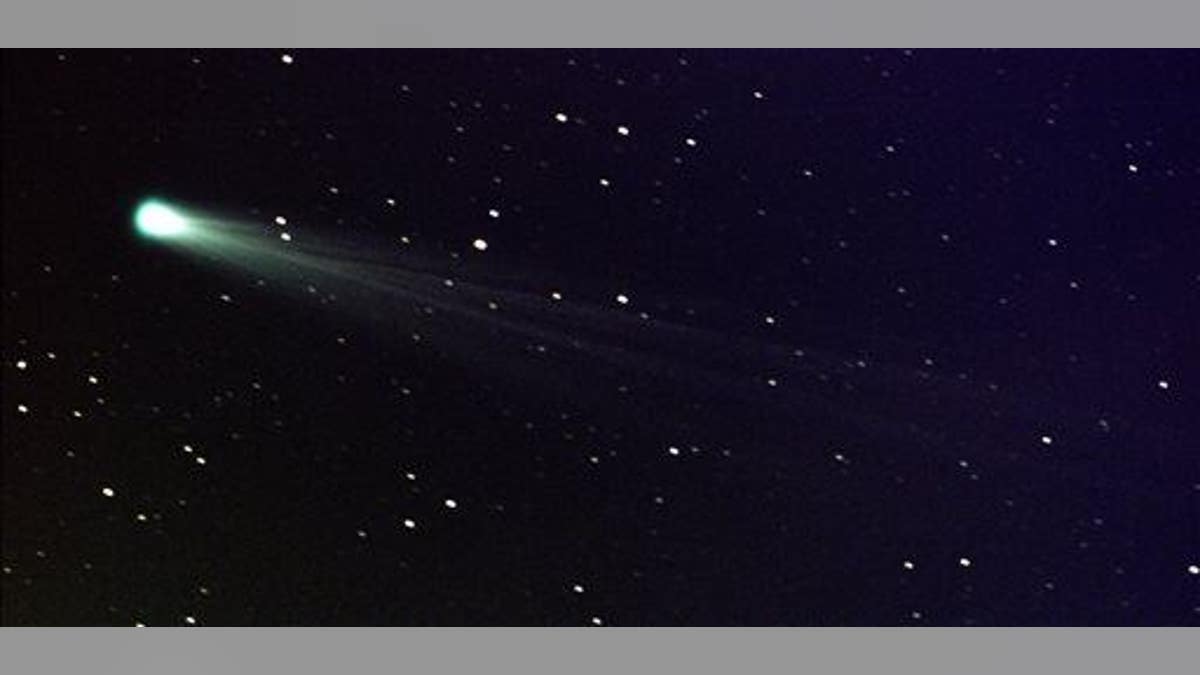
In this photo provided by NASA, Comet ISON shows off its tail in this three-minute exposure taken on Nov. 19, 2013, using a 14-inch telescope located at the Marshall Space Flight Center. (AP Photo/NASA, Aaron Kingery)
Comets are basically like cats, a senior researcher at Johns Hopkins University tells the Christian Science Monitor: "They're very interesting, and they do what they want." That may explain that even though scientists didn't think Comet C/2014 Q2 (also known as Comet Lovejoy) would prove to be visible to the human eye when it was discovered back in August, it now will be to viewers in non-light-polluted areas, thanks to the unpredictability of comet brightness.
Peak viewing times will be in mid-January, the Monitor notes, with the comet appearing to the right of the bottom half of Orion's bow on Jan. 7—the day the comet will come closest to Earth at 44 million miles.
There won't be an encore performance in our lifetime, either: The comet isn't scheduled to loop around this way for another 8,000 years. The comet was discovered over the summer by Australian astronomer Terry Lovejoy, who employed nothing more than a simple backyard telescope with an 8-inch mirror, National Geographic reports.
The comet, a "long-period" object believed to be on an extended journey through the skies, likely originated from the Oort cloud, a mass of orbiting ice and dust artifacts from the beginning of the solar system.
Scientists weren't expecting a strong light show, but comets are notoriously touch and go, with a variety of factors affecting their ultimate brightness, including how much ice they hold, their temperature, and how close they streak past the Earth.
Because the comet will be ascending higher into the sky each night, skywatchers should be able to see it through the end of January, depending on location.
(Last year, the Hubble Space Telescope spotted a comet-like object with six tails.)
This article originally appeared on Newser: Coming in Jan.: Comet Visible to Naked Eye
More From Newser




















